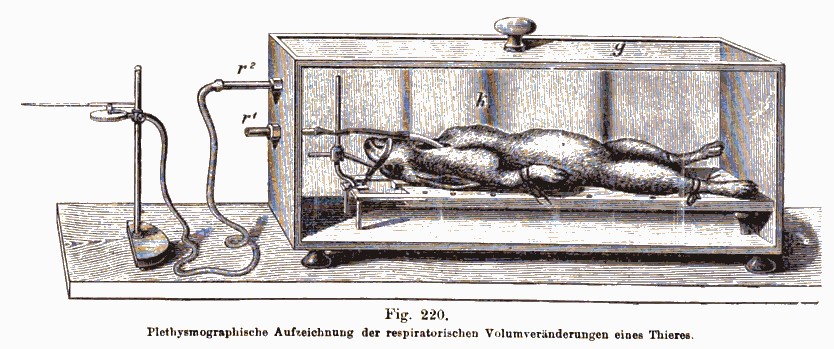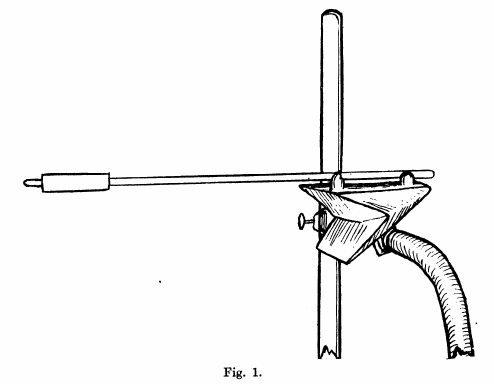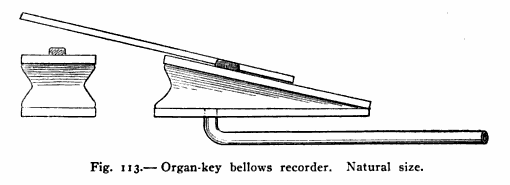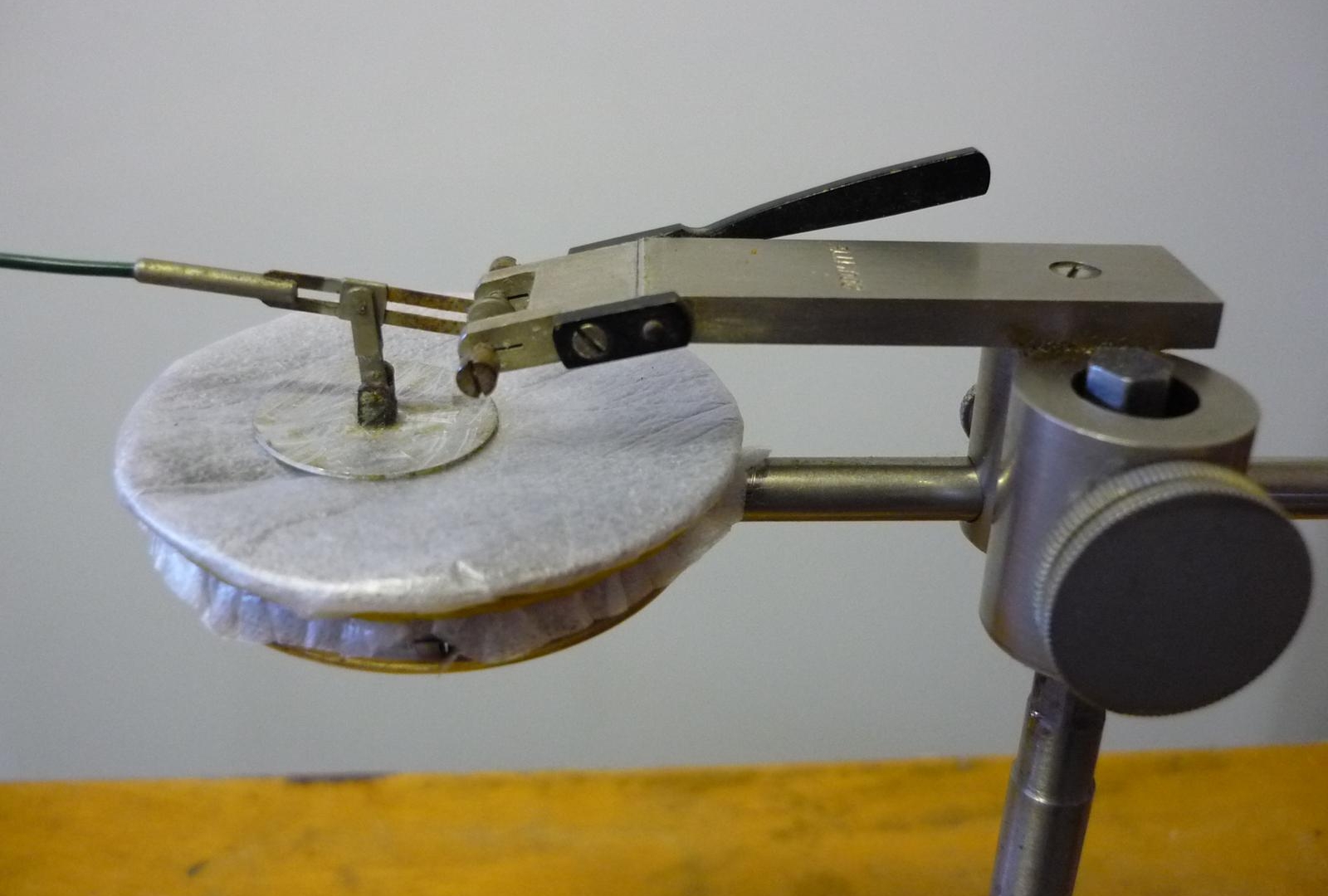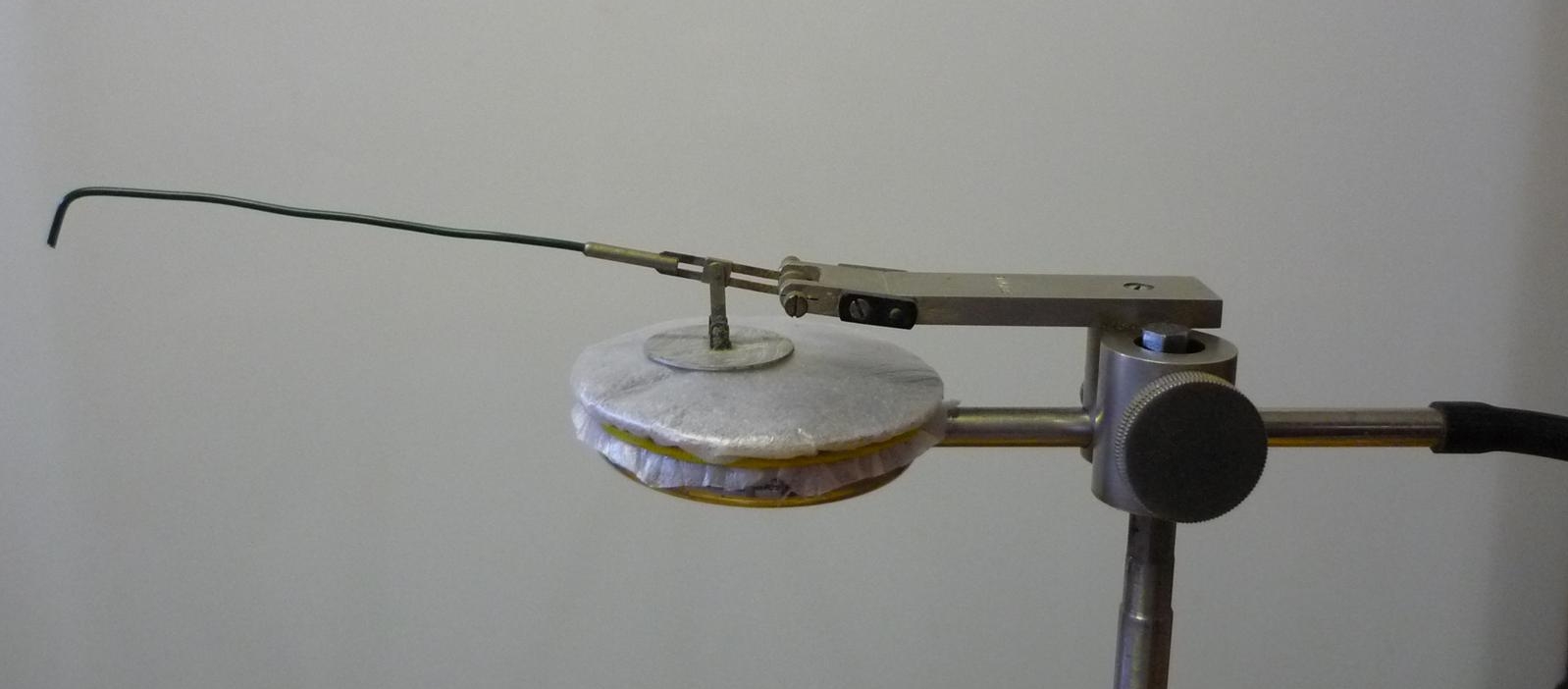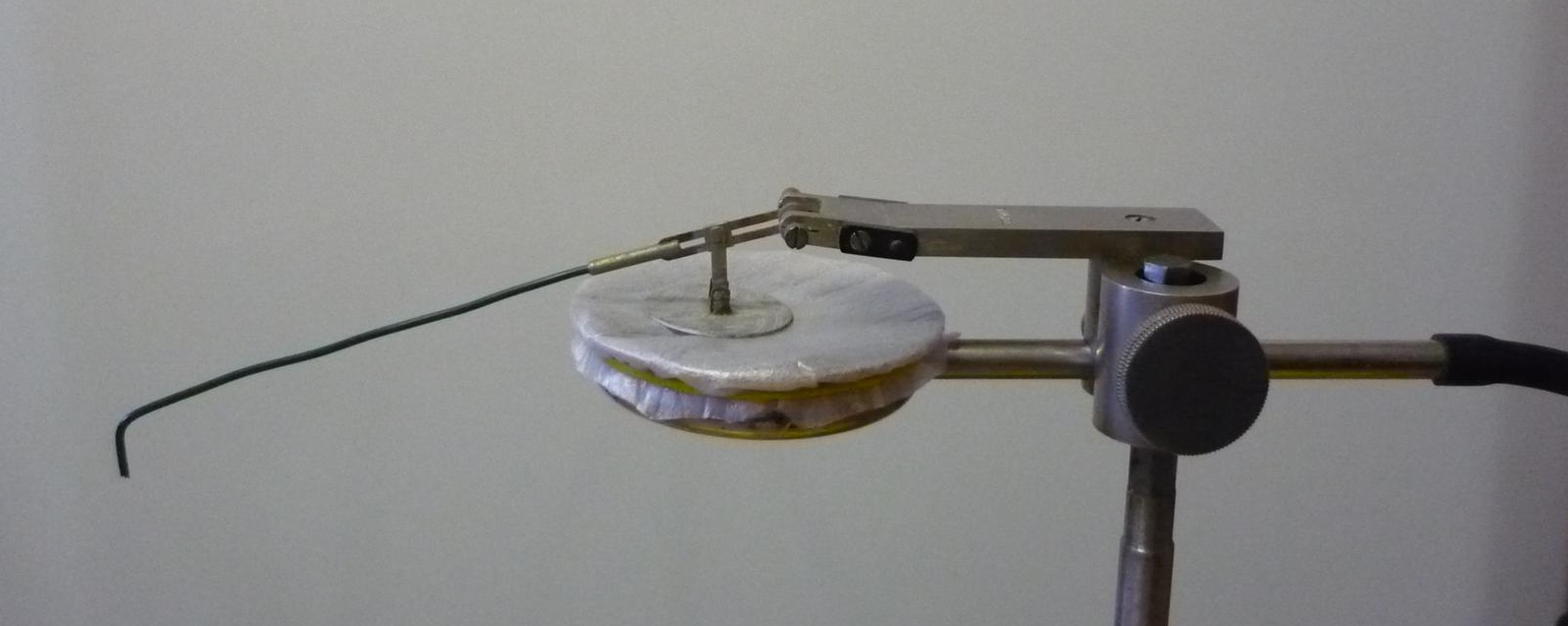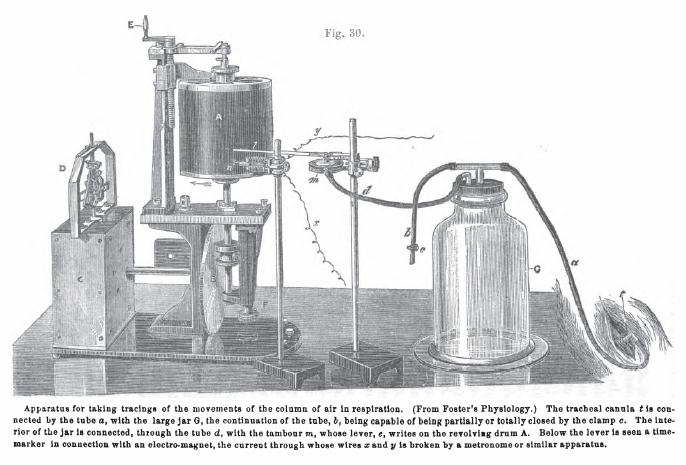From Physiologische graphik, By Oskar Langendorff, published by F. Deuticke , 1891, page 268. The plethysmograph is connected to a Marey tambour.
Category Archives: Tambour
Brodie Bellows, 1902
T.G. Brodie developed the recording bellows to measure small changes in volume and were intended to be a more accurate replacement for Marey’s tambour. They were intended for research with small animals and there were four sizes: 30×20 mm with a volume of 7.5 cc; 45 x 30 mm with a volume of 25 cc, 60 x 40 mm with a volume of 67 cc and 120 x 80 cc with a volume of 500 cc.
From Brodie, Thomas Gregor. “On recording variations in volume by air-transmission. A new form of volume-recorder.” The Journal of Physiology 27.6 (1902): 473-487.
Brodie Bellows, 1927, measuring esophageal pressure
A diagram showing the Brodie Bellows Tambour used to measure esophageal pressure. It was connected via a U-tube manometer to a 50 cc balloon that was inserted into a subject’s esophagus.
From Payne WW, Poulton EP. Experiments on visceral sensation. Part I. The relation of pain to activity in the human esophagus. J. Physiol, 1927, volume 63(3), page 217.
Brodie Bellows, 1913
Intended for experiments with small animals or in venous occlusion plethysmography, the bellows are approximately 3 cm long. It was usually referred to as a recording tambour.
Found in A Text-book of Pharmacology and Some Allied Sciences: (therapeutics, Materia Medica, Pharmacy, Prescription-writing, Toxicology, Etc.), Together with Outlines for Laboratory Work; Solubility and Dose Tables, Etc, by Torald Hermann Sollman, published by W.B. Saunders, 1913, page 815.
“Recording Tambours: The cheapest form consists of a home-made organ-bellow (fig. 113), the sides of very thin leather or gold-beaters skin. A 3 or 4 cm Marey’s tambour answers well. The 3 cm Brodie Bellows (Made by C.F. Palmer, 6 Upper Tulso Hill, London, N.W.) is the most delicate. All bear a straw and a writing point about 6 inches long.”
Marey Pneumograph, late 1800’s, close-up
The Marey Pneumograph was a pressure-sensing device and was used to measure respiration. Although it was sensitive it was not terribly accurate but it was the first device able to do what it did. The descriptions of the Marey Pneumograph from the late 1800’s implied that the diaphragm was a disk of thin metal but from this photograph it seems far more likely it was thin rubber or another similar material. Shown is a close-up of the diaphragm mechanism. This device was originally called a pneumograph but a later invention of Marey’s, which consisted of an elastic device strapped across the chest that directly measured the expansion and contraction of the thorax with breathing took that name and this is more correctly known as the Marey Tambour. Photograph is courtesy of Pierre Moutonnet.
Marey Pneumograph, Late 1800’s
The Marey Pneumograph was a pressure-sensing device and was used to measure respiration. Although it was sensitive it was not terribly accurate but it was the first device able to do what it did. The descriptions of the Marey Pneumograph from the late 1800’s implied that the diaphragm was a disk of thin metal but from this photograph it seems far more likely it was thin rubber or another similar material. The stylus attached to the diaphragm traced a graph of its movement onto a smoked (carbon black) metal drum and is shown here with the diaphragm pressurized. This device was originally called a pneumograph but a later invention of Marey’s, which consisted of an elastic device strapped across the chest that directly measured the expansion and contraction of the thorax with breathing, took that name and this is more correctly known as the Marey Tambour. Photograph is courtesy of Pierre Moutonnet.
Marey Pneumograph, late 1800’s
The Marey Pneumograph was a pressure-sensing device and was used to measure respiration. Although it was sensitive it was not terribly accurate but it was the first device able to do what it did. The descriptions of the Marey Pneumograph from the late 1800’s implied that the diaphragm was a disk of thin metal but from this photograph it seems far more likely it was thin rubber or another similar material. The stylus attached to the diaphragm traced a graph of its movement onto a smoked (carbon black) metal drum and is shown with a relaxed diaphragm. This device was originally called a pneumograph but a later invention of Marey’s, which consisted of an elastic device strapped across the chest that directly measured the expansion and contraction of the thorax with breathing took that name, and this is more correctly known as the Marey Tambour. Photograph is courtesy of Pierre Moutonnet.
Pneumograph, Marey, 1883
Etienne-Jules Marey’s device is a small diaphragm (tambour) responsive to pressure. The apparatus amplified the motion of the tambour. Respiration was then recorded on a kymograph.
From Experimental Pharmacology. A hand book. Methods for studying the physiological actions of drugs. By Ludimarr Hermann and Robert Meade Smith. Copyright 1883.
